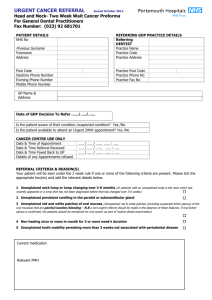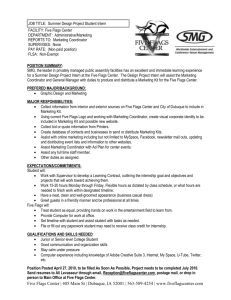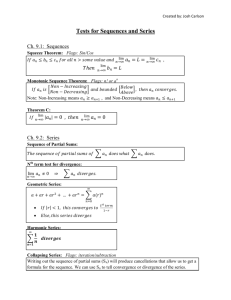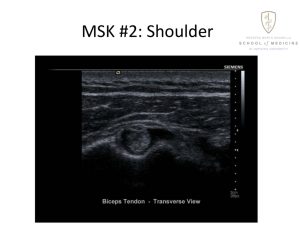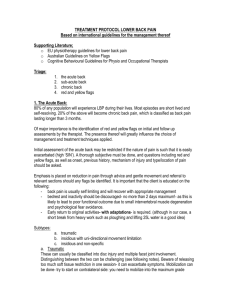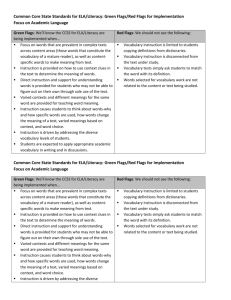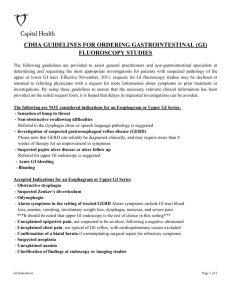Red Flag For The Shoulder
advertisement
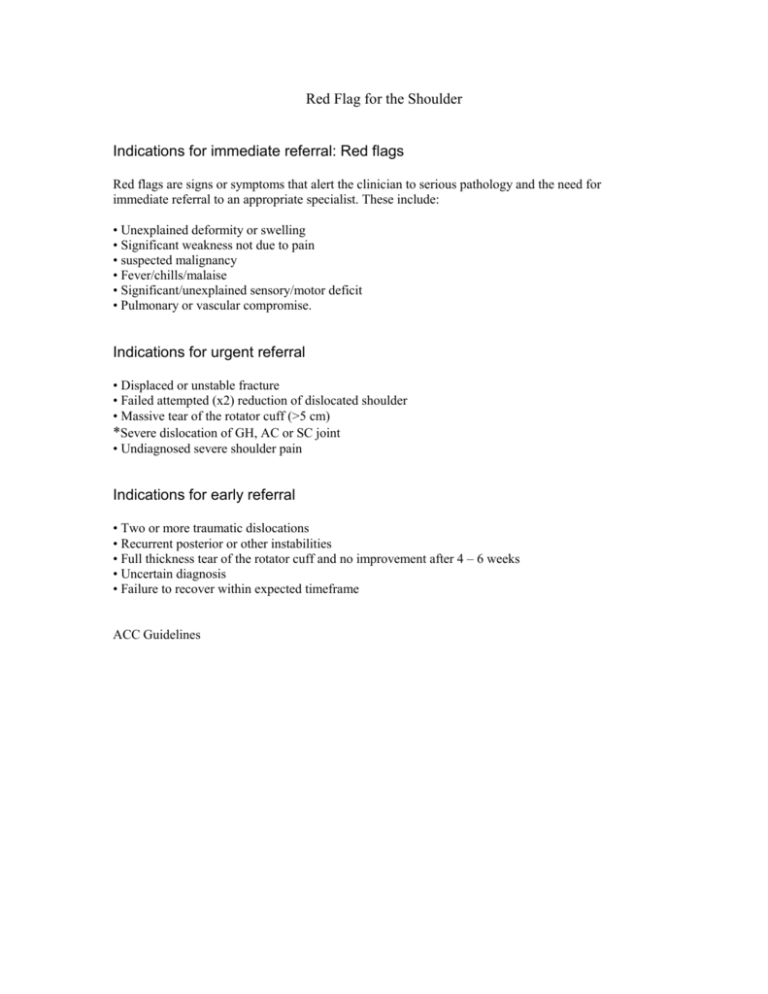
Red Flag for the Shoulder Indications for immediate referral: Red flags Red flags are signs or symptoms that alert the clinician to serious pathology and the need for immediate referral to an appropriate specialist. These include: • Unexplained deformity or swelling • Significant weakness not due to pain • suspected malignancy • Fever/chills/malaise • Significant/unexplained sensory/motor deficit • Pulmonary or vascular compromise. Indications for urgent referral • Displaced or unstable fracture • Failed attempted (x2) reduction of dislocated shoulder • Massive tear of the rotator cuff (>5 cm) *Severe dislocation of GH, AC or SC joint • Undiagnosed severe shoulder pain Indications for early referral • Two or more traumatic dislocations • Recurrent posterior or other instabilities • Full thickness tear of the rotator cuff and no improvement after 4 – 6 weeks • Uncertain diagnosis • Failure to recover within expected timeframe ACC Guidelines Red Flags for the Elbow Primary health care providers should screen for Red Flags during the initial patient encounter. Red Flags are clinical indicators of serious pathology (e.g. fractures, infection, malignancy, neurological damage). While patient history and clinical features are the most useful guides of serious pathology/disease, primary health care providers should consider these factors within the context of the presenting condition. Practice point They should bear in mind that the predictive value of Red Flag indicators has not been tested. Clinical features that may be indicators of Red Flags (serious pathology) include: • history of significant trauma • history of inflammatory arthritis or history consistent with inflammatory arthritis • history of unexplained, significant weight loss • fever • painful, swollen joints • progressive/widespread neurological symptoms/signs • severe, unremitting night-time pain W Widespread, unexplained pain U Unremitting pain when at rest ACC Guidelines

